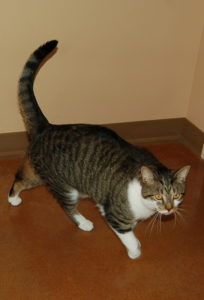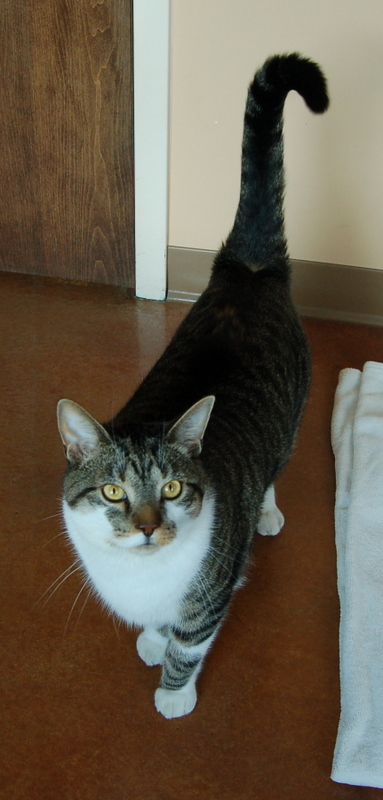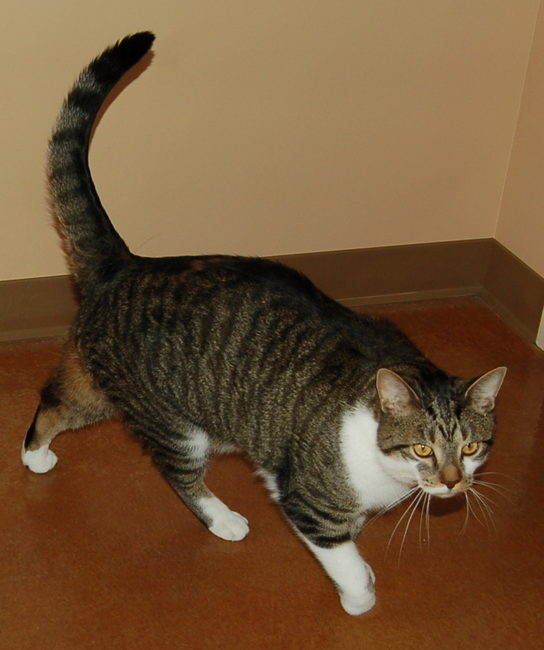Which part of meow do you not understand?
Deciphering cat-speak is quite a challenge, even for the experts. The secret lies with interpreting body language.
At veterinary clinics, we see lots of stressed cats. Our animal health technicians have to be good at telling a cuddly kitty from a temperamental tiger – or risk a painful bite. If ears are sideways and pupils wide, they usually reach for a towel or gloves. Such overt aggression is easy to spot, but some cats can be purring and rubbing one second and swatting at you the next. The message is often in the tail.
Cats’ tails don’t have to be all puffed up to tell a tale. Dogs wag their tails when they’re happy. But if it’s on the south end of a cat, a wagging tail is a warning. Even subtle twitches can be a sign that we should bundle up kitty in a towel before finishing the nail trim.

An erect tail, held straight up or arched over the back is a sign of friendliness. When choosing a new kitten, look for one with Happy Tail. Sometimes friendly tails are also vibrating back and forth, but beware – this can indicate mounting agitation. Cats that are getting worked up, even in a friendly way, sometimes cross a stimulation threshold that makes them bite.
Many cat owners have been painfully surprised when their purring, lap-sitting friend suddenly chomps them for no obvious reason. Chances are good that sometime before the bite, there were some little tail twitches happening that went unheeded.
The audible language of cats is usually best understood by their owners who can often distinguish a hungry “Meow”, from the let-me-out version or the caught-a-mousy battle cry. Often the meaning is easy to decipher by time of day since cats are slaves to habit. If you aren’t right there with the plate at dinner time, “meow” will let you know. When there’s food involved, “purr” might show up too and that’s another feline communication that can be misunderstood. It doesn’t always mean contentment.
Cats sometimes purr when frightened or painful, perhaps in an effort to gain sympathy and help. Be cautious around unfamiliar felines. Just because they are purring, don’t be too forward. A frightened, defensive cat can switch from “purr” to “grr” in an instant. And cats do definitely growl – a low, grumbling, deep in the throat I’ve heard too many times, warning of a challenging physical examination ahead. There’s no mistaking that sound even if I can’t see my patient’s tail twitching.

So, voice, eyes, ears and tail are some of the cat’s main means of communication. There are many subtle variations and combinations of body postures that alter the verbal message. That silent language is invaluable to veterinarians and technicians when we are watching for signs of pain in patients who are very good at hiding it. We can’t depend on them saying “Ow!” or is that “Meow?”
Dr. Fiona Gilchrist
Hillcrest Animal Hospital – Quinte West/Trenton, Ontario
July 2013




